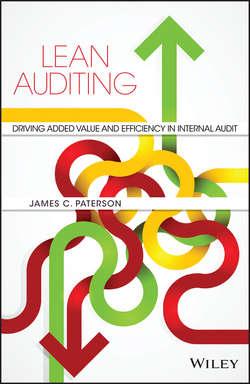Читать книгу Lean Auditing - Paterson James C. - Страница 8
На сайте Литреса книга снята с продажи.
Introduction
PART 2 LOOKING AT INTERNAL AUDIT PLANNING AND ASSIGNMENT DELIVERY
Оглавление6 Who are the Customers of Internal Audit?
In which I explore the question of the range of stakeholders who have an interest in audit and the benefits of having clarity about which of these stakeholders are key – if any.
7 What Really Adds Value – And What Doesn't
In which I use lean techniques to examine what we really mean by “adding value”, and – just as important – to understand what doesn't add value. This chapter also addresses the important topic of differences between stakeholder perspectives concerning what adds value (and what does not).
8 The Importance of Role Clarity in Assurance and the Insights Lean Can Offer
In which I highlight the vital importance of having clear roles and accountabilities in order to drive both effectiveness and efficiency; and some of the key tools that can be used to drive greater role clarity, both for key functions as well as internal audit.
9 The Audit Plan: Taking a Value Approach
In which I discuss the ways in which taking a lean, value-added approach to the audit plan can ensure that audit looks at the right areas, overcoming the common failing of having a disconnect between the audit plan and the key objectives and risks of the organizations they support.
10 Factoring in Risk Assurance in the Audit Plan
In which I discuss the crucial role of understanding the risk assurance picture before developing the internal audit plan. This approach challenges some common conventions in audit planning, including the way management is asked for their views on the areas that audit should look at.
11 Considering the Allocation of Resources to Optimize Value Add
In which I discuss how lean, progressive audit practices can encourage greater quality debates about the way audit resources are allocated across different risk areas in order to maximize the value derived from the plan. A number of the techniques outlined have been invaluable for a number of CAEs facing pressure on their budgets.
12 Assignments – Types, Scheduling and Resourcing
In which I highlight the need to move beyond standard assignment types and to resource and schedule assignments more flexibly, based on their value. Lean techniques help us to create a clearer flow of assignments during the year, reducing delays in starting to deliver the audit plan as well as the common problem of rushing to complete assignments towards the end of the year.
13 Using Assignment Scoping and Planning to Drive Added Value
In which I highlight the importance of properly scoping and planning assignments so that they can deliver the maximum value. This includes the important step of being clear about the key risks and controls that should be tested, and making the maximum use of intelligence so that the assignment does not simply repeat what is already known and has the maximum chance of delivering outcomes that matter.
14 Assignment Delivery – Managing What Really Goes On
Where I discuss the reality of what actually happens when audits start. I look at the many ways that time can be lost and offer a range of proven approaches to help drive audits forward in a purposeful way. In particular, I examine ways to think more carefully about what testing should be done and the challenge of knowing when to stop.
15 Using Communication and Quality Standards to Maximize the Added Value from Assignments
In which I discuss the ways in which assignments can get into difficulty in their latter stages. This can include difficulties and delays at audit closing meetings, finalizing audit reports (including agreeing actions) as well as meeting quality assurance standards. Lean, progressive ways of working help auditors drive assignments towards a value adding conclusion and overcome the many delays and distractions that are commonplace.
16 Assignment Follow-Up and Follow On
In which I show how lean principles encourage audit to take a fresh look at the process of tracking remediation of open actions and audit follow-ups. Lean ways of working can radically reduce the time and effort spent by audit doing follow up work, whilst driving greater reliance on management assurances.
